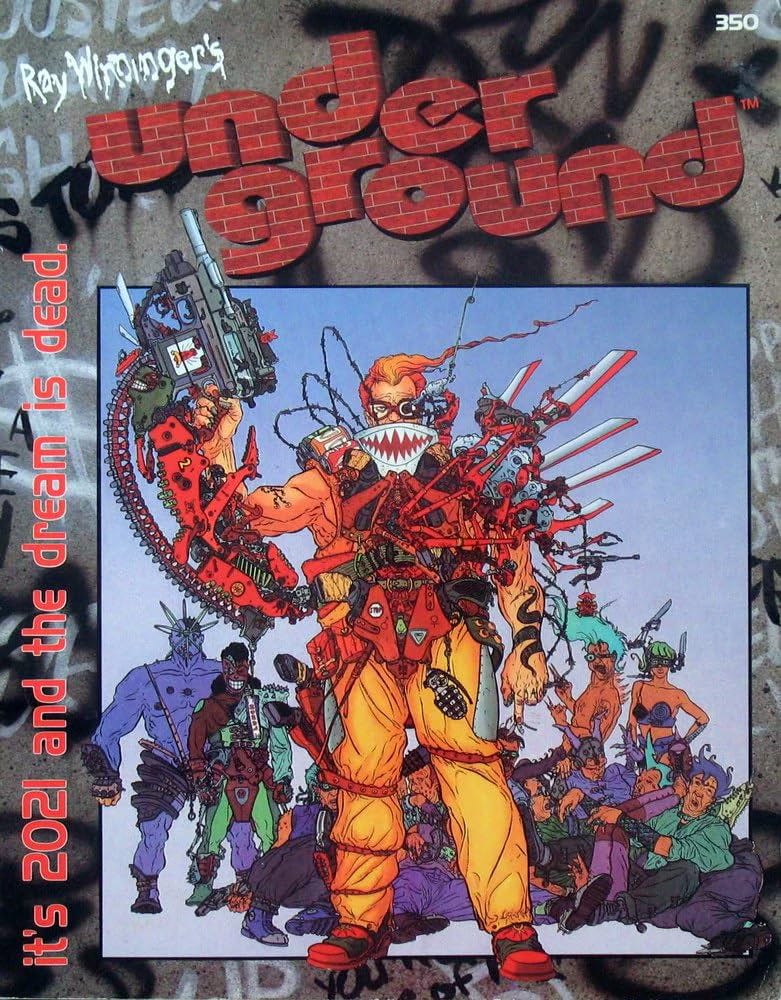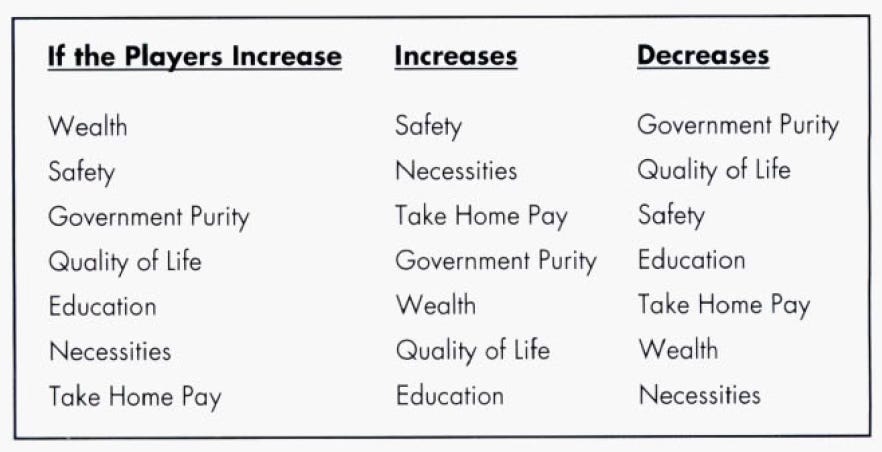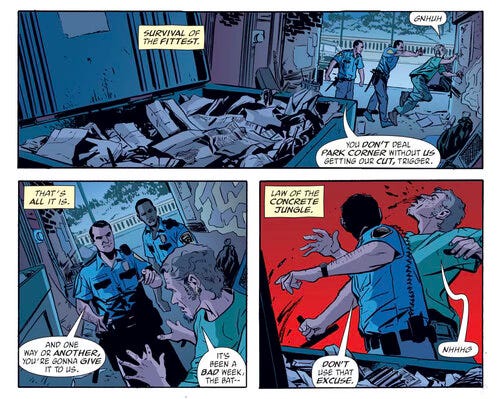A Matter of Parameters
Measuring social change in your TTRPG campaigns
As I mentioned in my last post, I’m currently running DC Heroes. My experience with superhero-genre gaming is incredibly limited; last year’s first outing with the Batman RPG was the first campaign I’ve ever participated in, either as player or GM.
Back in the 90s, though, I came very close to experiencing superhero gaming through a most unusual (and very of-its-time) variation on the MEGS system that also powers DC Heroes: Ray Winninger’s Underground.
This was an original setting heavily influenced by Aeon Flux and “Dark Age of Comics” titles. It’s cynical, biting, at-times hysterical, and was mostly lost on my teenage sensibilities. I remember we spent an afternoon making characters and then I accidentally TPK’d everyone in the first scene of the first session. Oops.
But there was lots about the game that stuck with me, primarily (it must be said) in the form of the dystopian setting, but also in some of its mechanics. In the latter case, in particular, it was Parameters, a system I’ve now adapted for use in my current DC Heroes game.
The idea is simple: there are seven metrics (Quality of Life, Take Home Pay, Safety, etc.) which are rated on a scale of 1-20. Every level of a community, from neighborhood to nation, has its own set of Parameter ratings. It’s up to the players to decide where they want to focus their superheroics and their ultimate goal for the campaign. (In Underground, there’s a not-so-subtle implication that players should be aiming to overthrow…if not the U.S. government, then something at least.)
Over the course of the campaign, players can choose to funnel their character’s Hero Points into shifting the Parameter ratings they wish to target. The bigger the area, the more Hero Points it takes.
The catch, of course, is that Hero Points are also the game’s way of improving your own character, as well as influencing actions in the game (making a task easier or harder, saving yourself from certain death, etc.). What’s more, every time a single Parameter metric is changed, it has both positive and negative knock-on effects:
Even worse? Unless the heroes pay a premium, at the end of the campaign all of the Paremeter numbers return to their original levels! Equilibrium and inertia and all that.
I love this system. It forces hard choices. It provides a funnel for Hero Points, keeping those Iconic Characters as their unchanging selves. It even explains why, despite all of Batman & Co.’s efforts, nothing ever seems to change in Gotham.
Well, my players are having none of that. They’ve set their campaign goal: increase the Government Purity of Gotham City without reducing Safety, and making that change permanent. This means they need to pay five times the normal cost in Hero Points, or 1,000 points total, just to raise Government Purity by one point! (For the record, I set it at 5 out of 20, because, well…)
We’ll see if they can achieve this goal. I honestly have no idea if it’s realistic or not, which makes things just as exciting for me!
But in all seriousness, I love these sorts of mechanics. Pendragon 6th Edition has a Favor mechanic that hits the same notes for me—it’s not a mechanic for measuring social change, per se, but it’s a great way to systematize abstract forces that drive the feudal world of King Arthur’s Britain, and frankly makes GMing the game a lot easier.
For folks running their own superhero games who wish to try the Parameter mechanic for themselves, here are the costs as originally presented:
For DC Heroes, I multiplied all these values by five, as Hero Points work differently in that game and seem to be on a higher scale than in Underground. You’ll want to do a similar eyeballing of whatever your game’s XP/benny currency is and apply the costs accordingly.
And remember: it’s three times the cost to shift a Parameter without lowering another one, and five times the cost to make that change permanent!
(I decided to be nice and not apply both multipliers to my players, choosing instead to just go with the higher of the two. One thousand Hero Points is plenty!)





